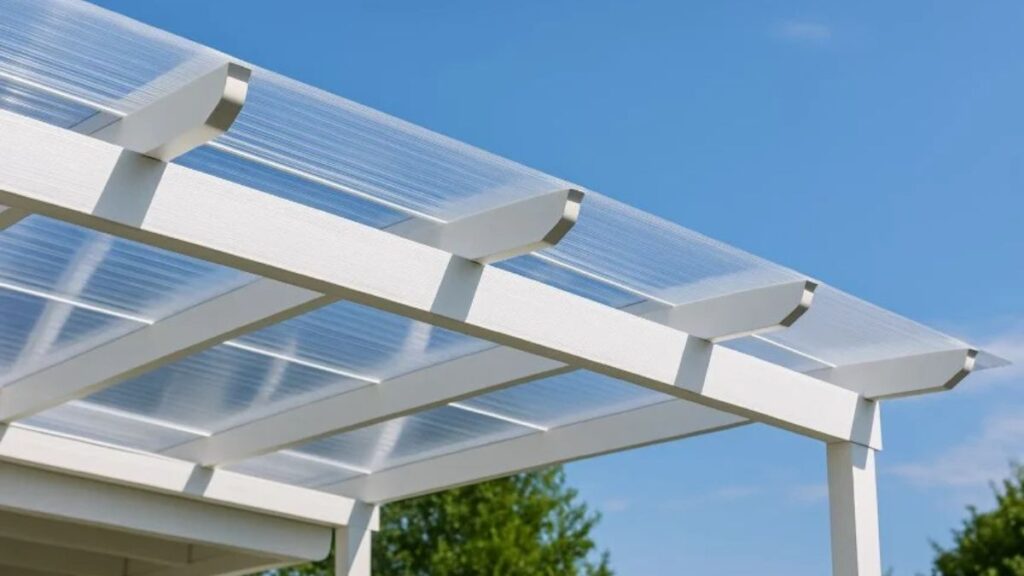Introduction to Acryldach
When it comes to roofing options, homeowners often find themselves grappling with a crucial decision: which material will protect their home while also enhancing its aesthetic appeal? Enter Acryldach—a modern contender that’s shaking up the traditional roofing market. This innovative product offers unique qualities that set it apart from conventional materials like asphalt shingles, clay tiles, and metal roofs. As we dive deeper into the world of Acryldach, you’ll discover what makes this choice not only appealing but potentially game-changing for your next roofing project. So let’s explore the ins and outs of Acryldach versus traditional materials!
Benefits of Acryldach
Acryldach offers numerous advantages that make it a standout choice for roofing. Its lightweight structure makes installation easy and efficient, reducing labor costs and time.
The material is highly resistant to UV rays, ensuring colors remain vibrant longer than traditional roofs. This resistance also contributes to lower energy bills by reflecting heat away from the building.
Another key benefit is its water resistance. Acryldach prevents leaks effectively, protecting your home from potential water damage. Plus, it’s available in various styles and finishes, allowing homeowners to customize their roofs according to personal aesthetic preferences.
Maintenance is minimal too; a simple wash can keep the surface looking new without requiring extensive upkeep or costly repairs. With these features combined, Acryldach proves itself as an innovative option for modern roofing solutions.
Drawbacks of Traditional Roofing Materials
Traditional roofing materials like asphalt shingles, wood, and metal have served homeowners well for decades. However, they come with notable drawbacks that can impact both functionality and aesthetics.
First, many traditional options require regular maintenance. This might mean inspections or repairs every few years to avoid leaks or deterioration.
Weather conditions can also take a toll on these materials. For instance, wood is prone to rot in humid climates while metal may rust over time if not properly treated.
Another issue is the weight of traditional roofs. They often demand additional structural support which could increase construction costs.
Color fading is common with standard shingles or tiles after prolonged sun exposure. This leads to an unappealing appearance and requires replacement sooner than expected.
Cost Comparison between Acryldach and Traditional Materials
When considering roofing options, cost is a significant factor. Acryldach generally presents an attractive upfront investment compared to traditional materials like asphalt shingles or clay tiles.
Installation costs for Acryldach can be slightly higher due to its specialized application process. However, the long-term savings often outweigh these initial expenses. It boasts lower maintenance needs and longer lifespan, which translates into fewer repairs over time.
In contrast, traditional roofing materials may seem cheaper initially but can incur ongoing costs related to upkeep and replacement. Homeowners should account for these factors when evaluating overall financial implications.
Additionally, energy efficiency plays a role in cost comparisons. Acryldach reflects sunlight effectively, potentially lowering cooling bills during hot months. Traditional roofs may not offer this benefit as prominently.
Understanding both short-term and long-term costs will guide homeowners in making informed choices about their roofing investments.
Durability and Maintenance Comparison
When it comes to durability, Acryldach stands out. It’s designed to withstand harsh weather conditions, from intense UV rays to heavy rain and snow. This material is resistant to cracking and fading over time.
Traditional roofing materials often struggle with longevity. Asphalt shingles can wear down quickly, while wooden roofs may rot or be vulnerable to pests. Frequent replacements can add up in both cost and hassle.
Maintenance requirements for Acryldach are minimal. Regular cleaning helps maintain its appearance but typically doesn’t require extensive upkeep.
In contrast, traditional materials demand more attention. They may need regular inspections for leaks or damage, along with periodic repairs that can be time-consuming and costly.
Choosing a roof is an investment in your home’s future; durability plays a significant role in that decision-making process.
Environmental Impact Comparison
When considering roofing options, the environmental impact is crucial. Acryldach stands out with its eco-friendly characteristics. Made from acrylic polymers, it’s often produced in a way that reduces waste and energy consumption.
Traditional materials like asphalt shingles or metal roofs typically require more resources to manufacture. Their production processes can generate significant emissions and contribute to pollution levels.
Acryldach’s durability also plays a role in sustainability. Its longevity means fewer replacements over time, leading to less landfill waste compared to conventional materials.
Additionally, many Acryldach systems are reflective, helping reduce urban heat islands and lowering cooling costs for homes. This contributes positively to local climates as well.
In contrast, traditional roofing options may absorb heat and increase energy demands during hot months, creating an additional burden on the environment through increased energy use.
Conclusion: Is Acryldach the Better Choice?
When weighing the benefits of acryldach against traditional roofing materials, several factors come into play. Acryldach offers distinct advantages like flexibility in design and ease of installation. Its vibrant colors and finishes can transform a home’s aesthetics while providing better protection from harsh weather conditions.
On the other hand, traditional materials often have a long-standing reputation for durability. However, they may require more maintenance and can lead to higher costs over time due to repairs or replacements.
Cost is another significant consideration. While initial investments in acryldach might appear on par with some premium options, its longevity could result in cost savings down the road.
Durability also plays an essential role; both options offer impressive lifespans but differ in how they handle environmental wear and tear. Acryldach tends to resist fading and cracking better than many traditional choices, which can degrade over years of exposure.
Environmental impact cannot be overlooked. Acryldach typically presents fewer ecological concerns compared to some conventional materials that may involve unsustainable extraction processes.
Choosing between acryldach and traditional roofing will depend on individual needs—balancing aesthetic appeal with functionality—and aligning those desires with budget considerations. Each option has merits that cater to different priorities within home improvement projects.






